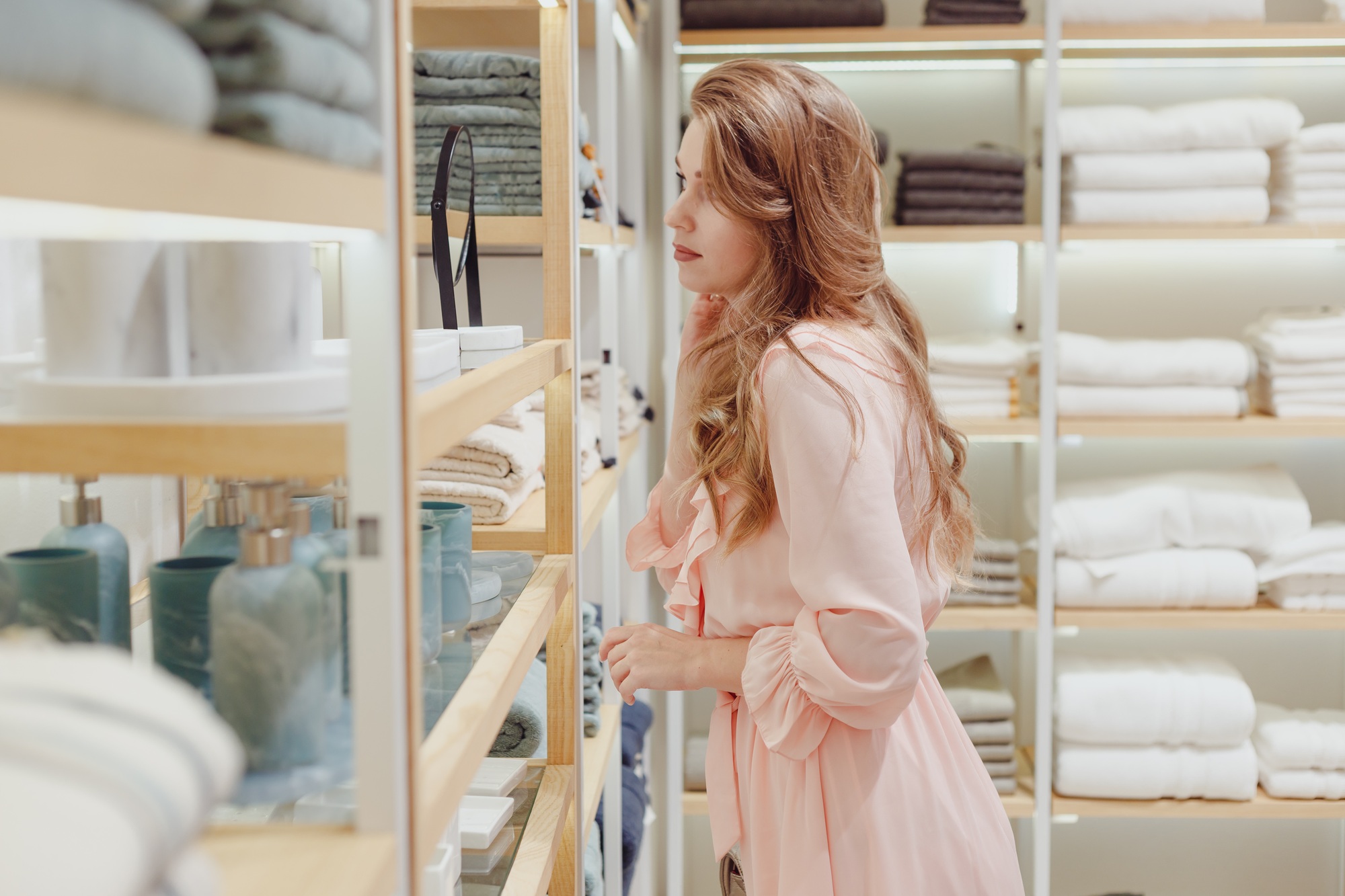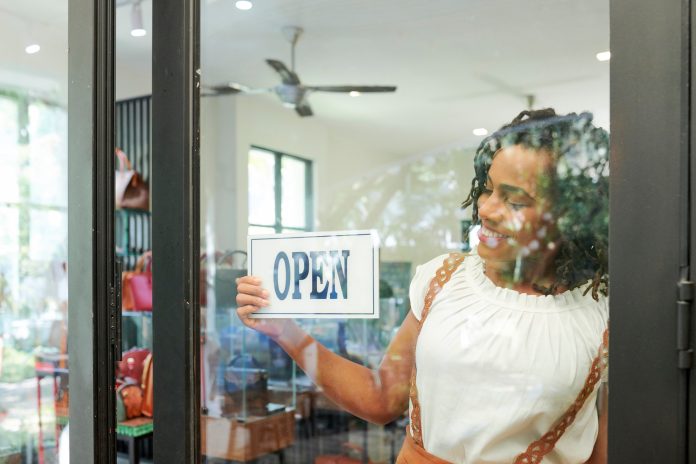Key Takeaways

- Conduct Market Research: Understand local competitors and customer demographics to tailor your products and marketing strategies effectively.
- Create a Business Plan: Outline your objectives, budget, and marketing tactics to guide the launch and operation of your beauty supply store.
- Choose the Right Location: Select a high-traffic area that is convenient for your target audience to maximize visibility and accessibility.
- Sourcing Quality Products: Establish relationships with reputable suppliers and curate a diverse product range to meet customer demands and stand out in the market.
- Implement Effective Marketing Strategies: Utilize a mix of online and offline tactics to attract customers, including social media engagement and community promotions.
- Focus on Customer Service: Train staff to deliver exceptional service and address customer inquiries promptly, fostering loyalty and repeat business.
Starting a beauty supply store can be a rewarding venture that taps into the ever-growing demand for beauty products. With the right approach and a keen understanding of your target market, you can create a thriving business that caters to beauty enthusiasts and professionals alike.
In this guide, you’ll discover essential steps to launch your store successfully. From selecting the perfect location to curating a diverse product range, each decision plays a crucial role in your store’s success. Whether you’re a beauty aficionado or just looking to explore a new business opportunity, you’re about to embark on an exciting journey in the beauty industry.
How to Open a Beauty Supply Store

Opening a beauty supply store requires strategic planning and execution. Follow these steps to establish your small business effectively.
- Conduct Market Research
Analyze local competitors and identify potential customer demographics. Understand preferences for beauty products, pricing strategies, and marketing techniques.
- Create a Business Plan
Outline objectives, target audience, budget, and financial projections. Include a marketing plan detailing promotional strategies for attracting customers.
- Choose a Suitable Location
Select a high-traffic area convenient for your target audience. Consider foot traffic, visibility, and proximity to related businesses like salons.
- Register Your Business
Choose a unique business name that reflects your brand. Complete the necessary registrations, obtain licenses, and ensure compliance with local regulations.
- Secure Funding
Determine startup costs, including rent, inventory, and marketing expenses. Explore funding options such as personal savings, business loans, or investors.
- Source Your Products
Establish relationships with suppliers to curate a diverse product range. Consider offering popular brands and unique items to stand out in the market.
- Design Your Store Layout
Create an inviting and organized store layout. Ensure easy navigation for customers and highlight key products effectively.
- Market Your Business
Utilize social media, local advertising, and promotional events to raise awareness. Engage with the community to build strong customer relationships.
- Hire Staff
If necessary, recruit knowledgeable personnel who can assist customers and share product knowledge. Provide training to maintain high service standards.
- Launch Your Store
Plan a grand opening event to attract customers. Offer special promotions or discounts to encourage initial sales and generate buzz around your grand opening.
By following these steps, you will establish a solid foundation for your beauty supply store and position your small business for success.
Researching the Market

Researching the market forms a vital component in understanding how to successfully open a beauty supply store. Knowledge of industry dynamics, customer preferences, and competitor strategies ensures your small business thrives in a competitive landscape.
Understanding the Beauty Supply Industry
Understanding the beauty supply industry involves recognizing current trends, market growth, and popular product categories. Familiarize yourself with high-demand items such as skincare products, hair care products, cosmetics, and tools. Constantly monitor shifts in consumer behavior and preferences, as these can influence your inventory and marketing strategies.
Identifying Your Target Audience
Identifying your target audience allows you to tailor your offerings and marketing efforts effectively. Assess local demographics regarding age, gender, income levels, and cultural backgrounds. Utilize surveys or focus groups to gather information about customer preferences. Knowing your target audience results in a more focused inventory that meets the demands of potential customers.
Analyzing Competitors
Analyzing competitors provides insights into successful strategies and gaps in the market. Visit established beauty supply stores to examine product selections, pricing styles, and customer service approaches. Evaluate their branding and marketing campaigns to determine what attracts customers. Collecting this information helps you develop a unique competitive edge for your small business.
Creating a Business Plan

Creating a comprehensive business plan forms the foundation for your beauty supply store. This plan outlines your vision and strategy, ensuring clarity in your objectives and operations.
Defining Your Business Model
Define your business model clearly. Identify whether your store caters to professionals, the general public, or both. Decide on your product offerings, such as skin care items, hair care products, or cosmetics. Consider whether to operate solely as a physical store or include an online component. Aligning the model with your target audience enhances your ability to generate sales and establish a loyal customer base.
Setting Your Budget
Set a realistic budget to guide your expenditures. Calculate startup costs including inventory purchases, rent, equipment, and utilities. Allocate funds for marketing initiatives to promote your store and attract customers. Remember to include a contingency fund for unexpected expenses. A well-planned budget prevents overspending and ensures financial stability as the business grows.
Choosing a Location
Choose a location that maximizes visibility and foot traffic. Assess areas with high population density and easy access for customers. Research nearby competitors to evaluate market saturation. Ensure the space meets your business needs regarding size and layout. Selecting the right location attracts more customers and increases your chances of business success.
Legal Requirements

Opening a beauty supply store involves navigating essential legal requirements. This includes registering your business, obtaining necessary licenses and permits, and understanding tax obligations.
Registering Your Business
Select a business structure for your beauty supply store. You can choose from sole proprietorship, partnership, limited liability company (LLC), or corporation. Each structure has unique legal and tax implications. For example:
- Sole proprietorship: Simple setup with no liability protection.
- LLC or corporation: Offers liability protection but requires more complexity in establishment.
Register your business name with local or state authorities. Confirm that the name is not currently in use by researching trademark databases and your state’s registered business name list.
Obtaining Necessary Licenses and Permits
Identify and acquire the necessary licenses and permits based on your location. Common requirements for a beauty supply store include:
- Business license: Valid in the city or county where your store operates.
- Sales tax permit: Required to collect sales tax on products sold.
- Reseller’s permit: Allows you to purchase products tax-exempt from suppliers.
Investigate local regulations to ensure compliance with health and safety standards.
Understanding Tax Obligations
Familiarize yourself with your tax obligations. This includes:
- Sales tax: Collect and remit sales tax on retail purchases.
- Income tax: File income taxes based on your business earnings.
- Self-employment tax: If you operate as a sole proprietor or partnership, plan for self-employment taxes on your income.
Consider consulting a tax professional to ensure adherence to federal and state tax laws, which aids in maintaining responsible financial practices for your small business.
Sourcing Products

Sourcing products forms the backbone of your beauty supply store. Focus on selecting reputable suppliers, ensuring product quality, and organizing your inventory effectively.
Selecting Suppliers
Selecting suppliers requires careful consideration. Explore options such as direct sourcing from manufacturers and working with wholesalers and distributors. Direct sourcing allows for better pricing and exclusive product launches but often involves high minimum order quantities. Wholesalers purchase in bulk and supply a variety of brands, making this route convenient for small businesses. Compare pricing structures and delivery times among different suppliers to optimize your choices.
Evaluating Product Quality
Evaluating product quality guarantees customer satisfaction and repeat business. Utilize sample orders to assess items firsthand. Check certifications, ingredient transparency, and customer reviews to ensure reliability. Establish clear criteria for quality control to maintain consistency and meet your customers’ expectations.
Organizing Inventory
Organizing inventory streamlines operations and improves efficiency. Implement a stock management system to keep track of incoming and outgoing products. Categorize items based on type and popularity, with high-demand products easily accessible. Create a clear labeling system to minimize confusion and expedite restocking. Regularly review inventory levels to make data-driven decisions on future orders.
Setting Up Your Store

To effectively set up your beauty supply store, focus on critical elements that enhance customer experience and streamline operations.
Designing Your Store Layout
Designing your store layout involves creating an inviting and functional space. Arrange products to facilitate easy navigation while highlighting popular items. Utilize eye-catching displays to showcase featured brands and seasonal promotions. Maintain clear pathways and consider customer flow, placing the checkout area strategically near the entrance or exit. Implement versatile shelving and fixtures that can be adjusted as inventory changes. Regularly assess and adapt the layout based on customer feedback and shopping patterns.
Choosing Store Fixtures and Displays
Choosing store fixtures and displays is essential for effective product presentation. Select fixtures that complement your brand’s aesthetic and match your target market’s preferences. Use freestanding displays for high-traffic areas to draw attention to featured items. Invest in quality shelving units for better visibility and organization of products. Incorporate flexible display options like mannequins or themed tables to entice customers. Ensure that product placement encourages impulse purchases while maintaining clarity in pricing and promotions.
Establishing an Online Presence
Establishing an online presence strengthens your small business’s visibility and reach. Create a user-friendly website showcasing your product offerings, store information, and promotional events. Utilize social media platforms to engage with potential customers and share beauty tips, product demos, and special discounts. Optimize your website for search engines by incorporating relevant keywords like “beauty supply” and “how to shop online,” enhancing online traffic. Implement an e-commerce platform to facilitate online purchases, allowing customers to shop conveniently from home. Regularly update content and engage with customer inquiries to build a loyal online community.
Marketing Your Beauty Supply Store

Effective marketing plays a vital role in attracting customers and ensuring long-term success for your beauty supply store. Implementing a diverse strategy maximizes your reach and builds brand awareness.
Developing a Marketing Strategy
Creating a detailed marketing strategy significantly enhances your store’s visibility. Incorporate both online and offline marketing tactics to create a balanced approach. Online methods include social media marketing, email marketing, and content marketing through your blog to establish authority and attract organic traffic. Offline tactics involve local advertising through flyers and community events to generate buzz and drive foot traffic.
Utilizing Social Media
Engaging on social media platforms like Instagram, Facebook, and Twitter amplifies your outreach. Post high-quality images showcasing products, share customer testimonials, and provide beauty tips. Regular updates keep your audience engaged. Use influencer partnerships to expand your reach and leverage their followers, which can increase brand trust and attract additional customers.
Offering Promotions and Loyalty Programs
Implementing promotions and loyalty programs encourages repeat business and fosters customer loyalty. Offer discounts on first purchases or seasonal promotions to entice new customers. Introduce a loyalty program that rewards returning customers with points redeemable for discounts or exclusive products. This strategy keeps customers engaged while driving sales, promoting your small business’s growth.
Managing Your Store
Managing a beauty supply store involves multiple key components that contribute to smooth operations.
Hiring and Training Staff
Hire knowledgeable staff members who possess experience in beauty products or customer service. Train employees on product knowledge, sales techniques, and customer interaction to ensure a high-quality shopping experience. Develop an onboarding program that includes product demonstrations, customer service scenarios, and updates on store policies. Encourage ongoing education through workshops or product training sessions to keep staff informed about the latest industry trends and techniques.
Handling Customer Service
Implement a customer-centric approach in your store. Offer personalized assistance to help customers find the right products for their needs. Establish clear protocols for addressing customer inquiries, returns, or concerns to promote satisfaction and loyalty. Encourage feedback through surveys or direct conversations to identify areas for improvement. Reward exceptional service to motivate staff and enhance the overall customer experience.
Tracking Sales and Performance
Utilize a robust inventory management system to track sales and performance metrics accurately. Analyze sales trends to identify popular products or categories, allowing for informed restocking decisions. Set specific performance goals for both overall sales and individual staff members to foster accountability. Review financial reports regularly to gauge profitability and adjust strategies as needed to enhance the success of your small business.
Troubleshooting Common Issues
Addressing common issues ensures smooth operations for your beauty supply store. Anticipate challenges and implement effective strategies to mitigate their impact.
Dealing with Supply Chain Challenges
Identify supply chain disruptions promptly. Establish strong relationships with multiple suppliers to diversify options. Implement inventory management systems to monitor stock levels and forecast demand accurately. Order products ahead of peak seasons to avoid shortages. Reviewing supplier performance regularly enhances decision-making and reliability.
Managing Customer Complaints
Handle customer complaints swiftly and effectively. Train your staff on customer service best practices to ensure they resolve issues confidently. Create clear guidelines for addressing common concerns while encouraging feedback. Monitor social media and review platforms to capture real-time customer sentiment. Follow up on resolved complaints to ensure satisfaction and build loyalty.
Adapting to Market Changes
Stay informed about market trends and shifts in consumer preferences. Regularly analyze competitors and customer feedback to identify changes needed in product offerings. Consider incorporating new beauty brands that align with emerging trends. Foster a flexible business model to pivot quickly as the market evolves, ensuring your small business remains competitive.
Conclusion
Opening a beauty supply store can be an exciting venture that taps into a thriving market. By focusing on strategic planning and understanding your target audience, you can create a unique shopping experience that resonates with customers.
Don’t underestimate the power of effective marketing and a strong online presence to drive traffic to your store. Remember that hiring knowledgeable staff and maintaining excellent customer service are key to building loyalty and repeat business.
Stay adaptable to market trends and customer preferences to keep your offerings fresh and relevant. With dedication and the right approach, you can carve out a successful niche in the beauty industry.
Frequently Asked Questions
What are the key steps to opening a beauty supply store?
To open a beauty supply store, you should conduct market research, create a business plan, select a high-traffic location, register your business, secure funding, source quality products, design an inviting layout, and market your store. Additionally, hiring knowledgeable staff and planning a grand opening event can help attract customers.
How do I choose the right location for my beauty supply store?
Choosing the right location involves analyzing foot traffic, visibility, and competition. Look for areas with a high concentration of your target audience and access to amenities that increase customer visits, such as shopping centers or salons.
What licenses and permits do I need to open a beauty supply store?
You typically need a business license, sales tax permit, reseller’s permit, and possibly additional local permits. Ensure you review local regulations and consult with a professional to comply with tax obligations and legal requirements.
How can I effectively source products for my beauty supply store?
Source products from reputable suppliers, either through direct sourcing from manufacturers or wholesalers. Evaluate product quality using sample orders, and check reviews or certifications to ensure high standards for customer satisfaction.
What marketing strategies should I use to attract customers?
Utilize a mix of online and offline marketing strategies. Consider social media advertising, influencer partnerships, local ads, and email newsletters. Implementing promotions and loyalty programs can also encourage repeat business and increase customer engagement.
How can I design my beauty supply store for optimal customer experience?
Create an inviting layout by strategically arranging products for easy navigation and using eye-catching displays. Maintain clear pathways, ensure signage is clear, and choose fixtures that resonate with your brand aesthetic while promoting impulse purchases.
What factors should I consider when hiring staff for my beauty supply store?
Hire staff who are knowledgeable about beauty products and customer service. Look for individuals with experience in retail or the beauty industry. Providing effective training and ensuring a customer-centric approach will promote a positive shopping experience.
How can I manage inventory effectively in my beauty supply store?
Implement a robust inventory management system to track stock levels and sales trends. Categorize products, conduct regular inventory reviews, and build strong supplier relationships to avoid stockouts and optimize restocking processes.
What common challenges might I face in running a beauty supply store?
Common challenges include supply chain issues, managing customer complaints, and adapting to market changes. Establishing relationships with multiple suppliers can mitigate supply chain risks, while training staff in customer service best practices can help address complaints effectively.
How important is an online presence for my beauty supply store?
Having an online presence is crucial for reaching a broader audience. A user-friendly website can facilitate e-commerce and improve customer engagement through social media. Invest in SEO strategies to enhance visibility and attract online shoppers.
Image Via Envato



